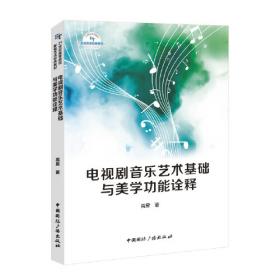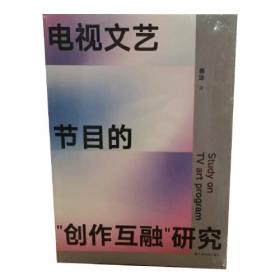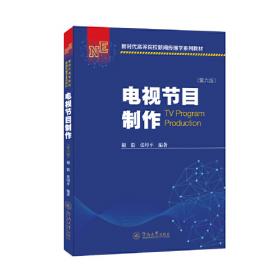电视访谈语篇:合作与对抗的协商
出版时间:
2013-10
版次:
1
ISBN:
9787306046499
定价:
24.00
装帧:
平装
开本:
大32开
纸张:
胶版纸
页数:
176页
字数:
260千字
1人买过
-
本著作以系统功能语言学纯理功能思想为理论框架,对美国CNN电视访谈节目LarryKingLive进行研究。《功能语言学论丛电视访谈语篇合作与对抗的协商:以LarryKingLive访谈节目为例》共有7章。第1章阐述研究目的、语料及研究方法。第2章回顾口语语篇研究较有影响的理论流派及相关研究成果。第3章介绍研究的理论框架-系统功能语言学,并介绍以系统功能语言学为指导的口语语篇研究成果。第4-6章对主持人与受访者的互动进行不同层面的分析,揭示电视访谈节目中人际意义的实现手段以及主持人与受访嘉宾的互动过程。第7章对研究成果进行总结并指出本研究对其它研究领域的启示作用。 廖海青,1962年出生于广东省广州市,中山大学外国语学院英语系副教授、硕士生导师。1983年获得文学学士学位,1988年获得文学硕士学位,2007年获英语语言文学博士学位。曾赴美国加州大学洛杉矶分校(19931994年)、英国剑桥大学(20062007年)作学术访问。主要研究兴趣包括功能语言学、语篇分析、二语习得。自2000年以来,先后发表论文数篇,主编丛书4套,主编教材1套。先后参加国家社科基金项目1项,省级横向项目1项,校级项目2项。 Acknowledgements
List of Figures
List of Tables
Abbreviations
Chapter 1 Introduction
1.1 The Research Background
1.2 Theoretical Development
1.3 Purpose of tlle Study
1.4 Data and Methodology
1.5 Book Overview
Chapter 2 Approaches to Verbal Interaction
2.1 Introduction
2.2 Defining Interview
2.2.1 Deftnitions
2.2.2 Features of television interview programmes
2.3 The Sociological Approache Conversation Analysis
2.3.1 Introduction and historical background
2.3.2 Conversational mechanism:turn taking,adjacency pairs,and preferences
2.3.3 CA in the research of interview discourse
2.3.4 Limitations of CA
2.4 Sociolinguistic Approaches
2.4.1 Ethnography of speaking
2.4.2 Interactional sociOlinguistics
2.5 Logicophilosophic Approaches
2.5.1 Speech Act Theory
2.5.2 Pragmatics approaches
2.6 Structuralfunctional Approach:The Birmingham School
2.7 Critical Discourse Analysis(CDA)
2.8 Summary
Chapter 3 An Overview of Systemic Functional Linguistics
3.1 Introduction
3.2 Three Layers of Meanings:Ideational,Textual and Interpersonal
3.3 Context in the Systemic Model
3.3.1 Context of culture:genre
3.3.2 Context of situation:register
3.3.3 Tenor and social identity
3.3.4 Tenor and grammatical,semantic,discourse and genenc patterns
3.4 Application of SFL to Conversation
3.5 Summary
Chapter 4 Grammatical Realizations of Interpersonal Meanings in the Television Interview
4.1 Introduction
4.2 Definitions to the E1ements of the Systems of Mood
4.2.1 Mood classes
4.2.2 Constituents of a clause
4.2.3 Mood types
4.3 Studies on Status.Contact and Affect
4.4 Status.Contact and Affect in Television Interviews
4.4.1 Status,Contact and Affect in the openings
4.4.2 Status.Contact and Affect in the main part
4.4.3 Status.Contact and Affect in the closings
4.5 Summary
Chapter 5 Realizations of Attitudinal Meanings in the Television Interview
5.1 Introduction
5.2 Appraisal:an Overview
5.2.1 Attitude
5.2.1.1 Affect
5.2.1.2 Judgement
5.2.1.3 Appreciation
5.2.2 Graduation
5.2.2.1 F0rce
5.2.2.2 FoCUS
5.2.3 Engagement
5.3 Appraisal in the Interview Data
5.3.1 Attitude and Graduation
5.3.1.1 Expressing Attitude explicitly and implicitly
5.3.1.2 Grading explicit Attitude
5.3.1.3 Appraisal preferences of the IR and IEs
5.3.2 Engagement
5.3.3 Interaction of Appraisal Resources
5.4 Summary
Chapter 6 The Discourse Structure of the Telvision
Interview
6.1 Introduction
6.2 A Functional.semantic Model of Dialogue
6.2.1 Halliday’S model
6.2.2 Development of Halliday’S model
6.3 Interpreting Discourse Structure in the Television Interview
6.3.1 Discourse structure in the opening phase
6.3.2 Discourse structure in the main body phase
6.3.2.1 Supporting exchange patterns
6.3.2.2 Confronting exchange patterns
6.3.2.3 Evasive exchange patterns
6.3.3 Discourse structure in the closing phase
6 4 Summary
Chapter 7 Conclusions
7.1 Introduction
7.2 Major Research Findings
7.2.1 Contributions of tlle studv
7.2.2 Major research findings
7.3 Some Implications
7.4 Limitations and Suggestions for Further Research
Appendix A:Data List
Appendix B:Coding Sheet for Appraisal in King’S Interview with Andre Agassi
Appendix C:Coding Sheet for Speech Functions in King’S Interview with Andre Agassi
References
-
内容简介:
本著作以系统功能语言学纯理功能思想为理论框架,对美国CNN电视访谈节目LarryKingLive进行研究。《功能语言学论丛电视访谈语篇合作与对抗的协商:以LarryKingLive访谈节目为例》共有7章。第1章阐述研究目的、语料及研究方法。第2章回顾口语语篇研究较有影响的理论流派及相关研究成果。第3章介绍研究的理论框架-系统功能语言学,并介绍以系统功能语言学为指导的口语语篇研究成果。第4-6章对主持人与受访者的互动进行不同层面的分析,揭示电视访谈节目中人际意义的实现手段以及主持人与受访嘉宾的互动过程。第7章对研究成果进行总结并指出本研究对其它研究领域的启示作用。
-
作者简介:
廖海青,1962年出生于广东省广州市,中山大学外国语学院英语系副教授、硕士生导师。1983年获得文学学士学位,1988年获得文学硕士学位,2007年获英语语言文学博士学位。曾赴美国加州大学洛杉矶分校(19931994年)、英国剑桥大学(20062007年)作学术访问。主要研究兴趣包括功能语言学、语篇分析、二语习得。自2000年以来,先后发表论文数篇,主编丛书4套,主编教材1套。先后参加国家社科基金项目1项,省级横向项目1项,校级项目2项。
-
目录:
Acknowledgements
List of Figures
List of Tables
Abbreviations
Chapter 1 Introduction
1.1 The Research Background
1.2 Theoretical Development
1.3 Purpose of tlle Study
1.4 Data and Methodology
1.5 Book Overview
Chapter 2 Approaches to Verbal Interaction
2.1 Introduction
2.2 Defining Interview
2.2.1 Deftnitions
2.2.2 Features of television interview programmes
2.3 The Sociological Approache Conversation Analysis
2.3.1 Introduction and historical background
2.3.2 Conversational mechanism:turn taking,adjacency pairs,and preferences
2.3.3 CA in the research of interview discourse
2.3.4 Limitations of CA
2.4 Sociolinguistic Approaches
2.4.1 Ethnography of speaking
2.4.2 Interactional sociOlinguistics
2.5 Logicophilosophic Approaches
2.5.1 Speech Act Theory
2.5.2 Pragmatics approaches
2.6 Structuralfunctional Approach:The Birmingham School
2.7 Critical Discourse Analysis(CDA)
2.8 Summary
Chapter 3 An Overview of Systemic Functional Linguistics
3.1 Introduction
3.2 Three Layers of Meanings:Ideational,Textual and Interpersonal
3.3 Context in the Systemic Model
3.3.1 Context of culture:genre
3.3.2 Context of situation:register
3.3.3 Tenor and social identity
3.3.4 Tenor and grammatical,semantic,discourse and genenc patterns
3.4 Application of SFL to Conversation
3.5 Summary
Chapter 4 Grammatical Realizations of Interpersonal Meanings in the Television Interview
4.1 Introduction
4.2 Definitions to the E1ements of the Systems of Mood
4.2.1 Mood classes
4.2.2 Constituents of a clause
4.2.3 Mood types
4.3 Studies on Status.Contact and Affect
4.4 Status.Contact and Affect in Television Interviews
4.4.1 Status,Contact and Affect in the openings
4.4.2 Status.Contact and Affect in the main part
4.4.3 Status.Contact and Affect in the closings
4.5 Summary
Chapter 5 Realizations of Attitudinal Meanings in the Television Interview
5.1 Introduction
5.2 Appraisal:an Overview
5.2.1 Attitude
5.2.1.1 Affect
5.2.1.2 Judgement
5.2.1.3 Appreciation
5.2.2 Graduation
5.2.2.1 F0rce
5.2.2.2 FoCUS
5.2.3 Engagement
5.3 Appraisal in the Interview Data
5.3.1 Attitude and Graduation
5.3.1.1 Expressing Attitude explicitly and implicitly
5.3.1.2 Grading explicit Attitude
5.3.1.3 Appraisal preferences of the IR and IEs
5.3.2 Engagement
5.3.3 Interaction of Appraisal Resources
5.4 Summary
Chapter 6 The Discourse Structure of the Telvision
Interview
6.1 Introduction
6.2 A Functional.semantic Model of Dialogue
6.2.1 Halliday’S model
6.2.2 Development of Halliday’S model
6.3 Interpreting Discourse Structure in the Television Interview
6.3.1 Discourse structure in the opening phase
6.3.2 Discourse structure in the main body phase
6.3.2.1 Supporting exchange patterns
6.3.2.2 Confronting exchange patterns
6.3.2.3 Evasive exchange patterns
6.3.3 Discourse structure in the closing phase
6 4 Summary
Chapter 7 Conclusions
7.1 Introduction
7.2 Major Research Findings
7.2.1 Contributions of tlle studv
7.2.2 Major research findings
7.3 Some Implications
7.4 Limitations and Suggestions for Further Research
Appendix A:Data List
Appendix B:Coding Sheet for Appraisal in King’S Interview with Andre Agassi
Appendix C:Coding Sheet for Speech Functions in King’S Interview with Andre Agassi
References
查看详情
-
九品
北京市东城区
平均发货25小时
成功完成率88.84%
-
九品
北京市海淀区
平均发货23小时
成功完成率89.41%
-
全新
北京市海淀区
平均发货16小时
成功完成率88.88%
-
九品
北京市昌平区
平均发货23小时
成功完成率88.98%
-
八五品
广东省东莞市
平均发货9小时
成功完成率90.64%
-
九五品
江苏省南京市
平均发货21小时
成功完成率90.76%
-
九五品
河南省郑州市
平均发货1小时
成功完成率96.13%
-
全新
上海市浦东新区
平均发货19小时
成功完成率82.61%
-
九品
江苏省南京市
平均发货14小时
成功完成率94.96%
-
九五品
江苏省南京市
平均发货14小时
成功完成率94.96%
-
九五品
江苏省南京市
平均发货14小时
成功完成率94.96%
-
九品
江苏省南京市
平均发货14小时
成功完成率94.96%

 占位居中
占位居中



























